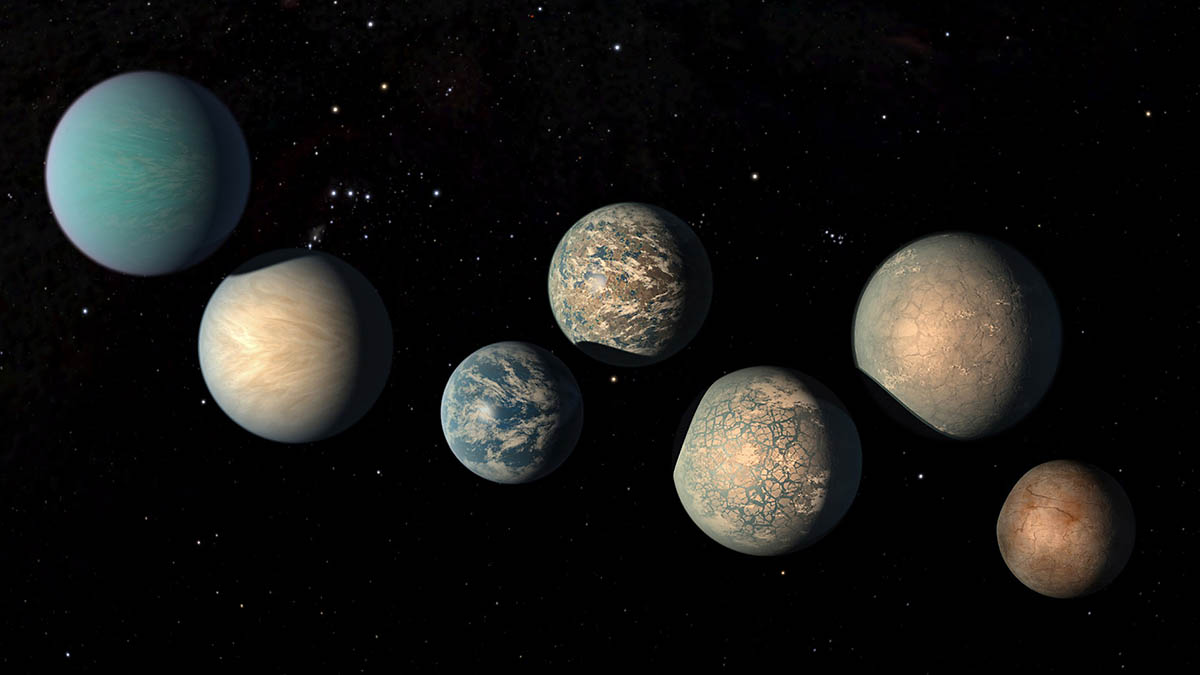This illustration shows the seven Earth-size planets of TRAPPIST-1. The image does not show the planets’ orbits to scale, but highlights possibilities for how the surfaces of these intriguing worlds might look. (NASA/JPL-Caltech)
Home This illustration shows the seven Earth-size planets of TRAPPIST-1. The image does not show the planets’ orbits to scale, but highlights possibilities for how the surfaces of these intriguing worlds might look. (NASA/JPL-Caltech) This illustration shows the seven Earth-size planets of TRAPPIST-1. The image does not show the planets' orbits to scale, but highlights possibilities for how the surfaces of these intriguing worlds might look. (NASA/JPL-Caltech)



